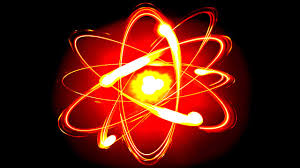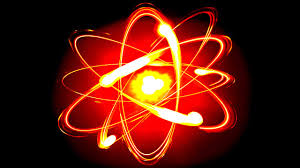
A project that could transform the way we think about energy is being worked upon together by 35 countries, including the U.S., China and Russia, at a research facility in the south of France.
The collaboration is constructing a magnetic fusion device known as a tokamak which is commonly known as ITER – an acronym for the International Thermonuclear Experimental Reactor as well as Latin for 'the way'.
The project has quite a big ambition. Based on a principle which powers our Sun – as mind boggling as it may sound, fusion is a feasible large scale, carbon-free source of energy based on the same is the design of the tokamak which is striving to prove that theory.
There are significant differences between fusion and fission, which is used to produce nuclear energy today.
"Fission is taking a very large atom like uranium, you hit it and it splits it apart into two pieces," Mark Henderson, a physicist at ITER, said. "Fusion takes… two (very) small particles, it fuses together and give(s) off energy," he added.
There is huge potential for fusion. Fusion power "offers the prospect of an almost inexhaustible source of energy for future generations", according to the World Nuclear Association.
the aim at ITER's tokamak was to generate 150 million degrees Celsius and compared to this, the Sun was around 15 million degrees Celsius, Henderson said.
"The objective there is (that) you need it to be really hot to take two charged particles and slam them together to fuse," he said. "The two charged particles are both positive. Normally they don't want to touch and you have to give them the energy so that they can actually combine and fuse together."
The ITER facility is currently undergoing through its construction phase. While countries like China, India, Japan, South Korea, the U.S. and Russia providing part of the money for the project, the European Union countries are responsible for the largest portion of costs.
It will be the first fusion device to generate "net energy" when it is up and running, those behind the project say. When the amount of energy needed to power the machine's systems is exceeded by the total energy produced during a fusion plasma pulse, what results is referred to by the term according to ITER.
This concept of "net energy" is an exciting, tantalizing one. Is fusion, though, just a pipe dream?
"ITER is our countries coming together to answer that question once and for all: can fusion play a role in the future," William D. Magwood IV, director general of the OECD's Nuclear Energy Agency, said.
Magwood IV added that once it was operating, the tests performed at ITER would help to answer that question.
(Source:www.cnbc.com)
The collaboration is constructing a magnetic fusion device known as a tokamak which is commonly known as ITER – an acronym for the International Thermonuclear Experimental Reactor as well as Latin for 'the way'.
The project has quite a big ambition. Based on a principle which powers our Sun – as mind boggling as it may sound, fusion is a feasible large scale, carbon-free source of energy based on the same is the design of the tokamak which is striving to prove that theory.
There are significant differences between fusion and fission, which is used to produce nuclear energy today.
"Fission is taking a very large atom like uranium, you hit it and it splits it apart into two pieces," Mark Henderson, a physicist at ITER, said. "Fusion takes… two (very) small particles, it fuses together and give(s) off energy," he added.
There is huge potential for fusion. Fusion power "offers the prospect of an almost inexhaustible source of energy for future generations", according to the World Nuclear Association.
the aim at ITER's tokamak was to generate 150 million degrees Celsius and compared to this, the Sun was around 15 million degrees Celsius, Henderson said.
"The objective there is (that) you need it to be really hot to take two charged particles and slam them together to fuse," he said. "The two charged particles are both positive. Normally they don't want to touch and you have to give them the energy so that they can actually combine and fuse together."
The ITER facility is currently undergoing through its construction phase. While countries like China, India, Japan, South Korea, the U.S. and Russia providing part of the money for the project, the European Union countries are responsible for the largest portion of costs.
It will be the first fusion device to generate "net energy" when it is up and running, those behind the project say. When the amount of energy needed to power the machine's systems is exceeded by the total energy produced during a fusion plasma pulse, what results is referred to by the term according to ITER.
This concept of "net energy" is an exciting, tantalizing one. Is fusion, though, just a pipe dream?
"ITER is our countries coming together to answer that question once and for all: can fusion play a role in the future," William D. Magwood IV, director general of the OECD's Nuclear Energy Agency, said.
Magwood IV added that once it was operating, the tests performed at ITER would help to answer that question.
(Source:www.cnbc.com)














